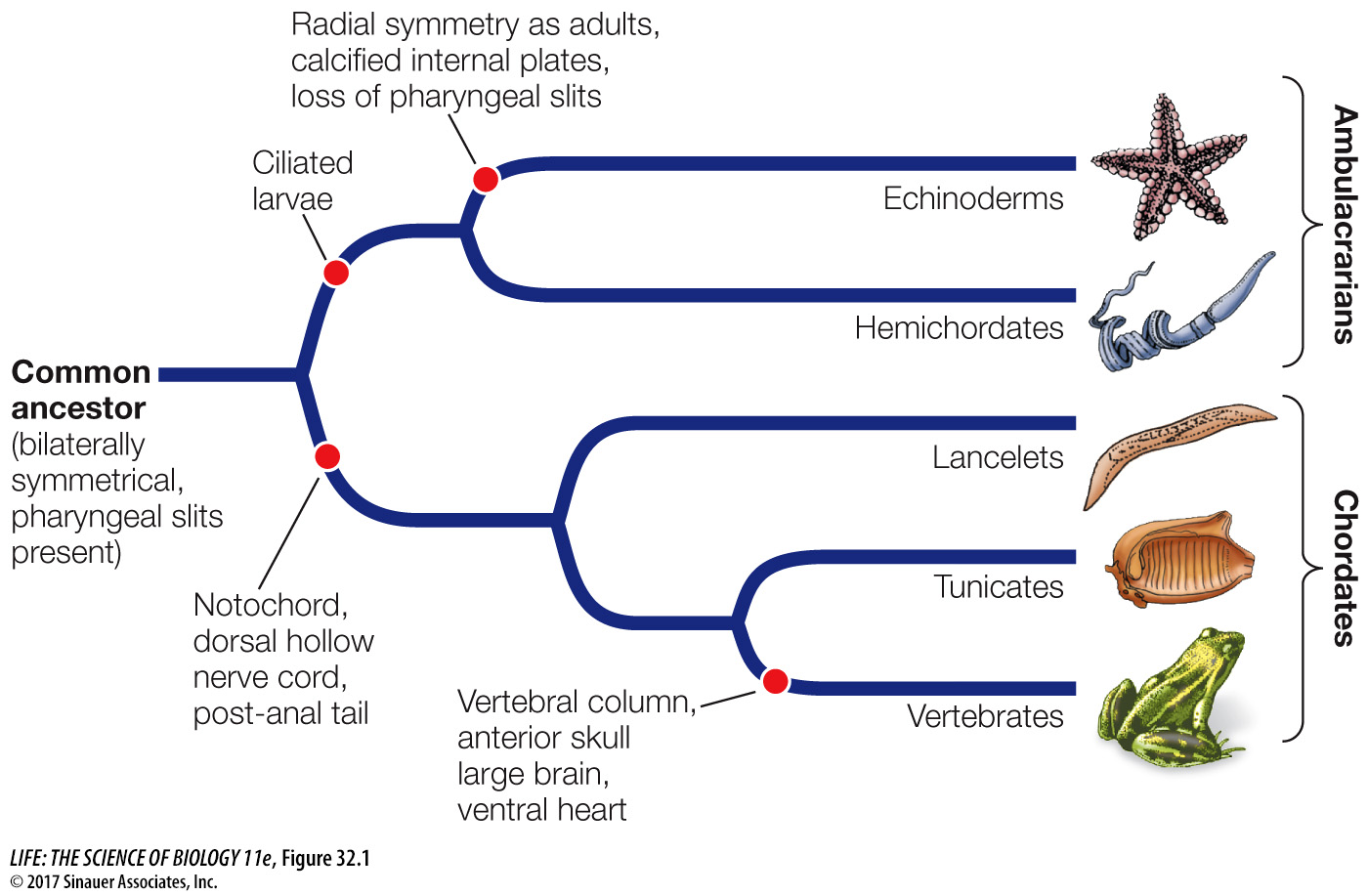There are three major deuterostome clades
All deuterostomes are triploblastic, coelomate animals (see Figure 30.6C). Skeletal elements, where present, are internal rather than external. Some species have segmented bodies, but the segments are less obvious than those of annelids and arthropods. Although there are far fewer species of deuterostomes than of protostomes (see Table 30.1), we have a special interest in deuterostomes because we are members of that clade. The deuterostomes are also of interest because they include many large animals that strongly influence the characteristics of ecosystems. Many deuterostome species have been intensively studied in all fields of biology. Complex social behaviors are well developed among some deuterostomes (especially among the vertebrates).
The major groups of living deuterostomes comprise three distinct clades (Figure 32.1):
Echinoderms: sea stars (starfish), sea urchins, and their relatives
Hemichordates: acorn worms and pterobranchs
Chordates: tunicates, lancelets, and vertebrates

Activity 32.1 Deuterostome Phylogeny
In addition, some recent genomic analyses suggest that two poorly known groups, the xenoturbellids and the acoels, may also be deuterostomes, although the exact position of these groups among animals is controversial.
Animation 32.1 An Overview of the Deuterostomes